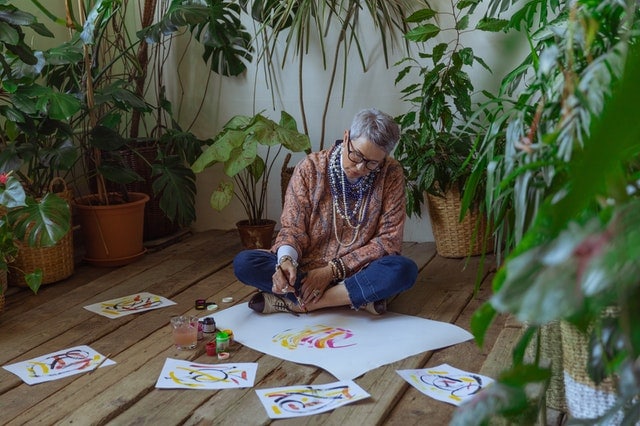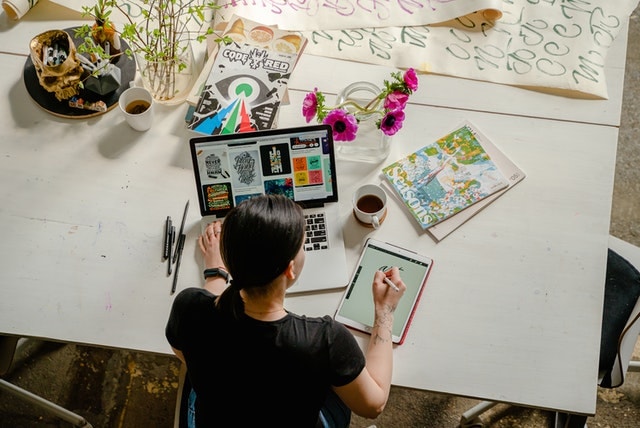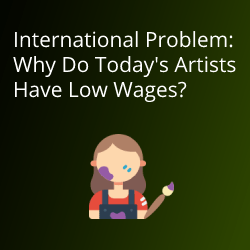Can you imagine the world without any form of art, including music, dance, literature, cinematography?
If yes, doesn’t it seem meaningless and dull?
The creative expression of one’s ideas and imaginations is everywhere around us.
Art transcends the boundaries of language, politics, culture, and brings people together.
Although it’s extremely important for society, art is constantly being questioned.
It’s also taken for granted in many ways, starting with a lack of funding to low artist rewards.
Why do most creative people get poor remuneration?
Let’s try to find out in this article!
Acute Financial Problems
Today, most cultural professions are characterized by low payment rates and poor work conditions.
According to recent research, nearly one-third of creative practitioners all over the world earn less than the national minimum wage.
Partly, it’s because most of them are paid flat fees regardless of actual hours worked.
One of the reasons for it is that artists have limited employment options in the cultural sector.
As a result, their life choices, such as a place to live and work are fraught with complete uncertainty.
Some International Statistics
Even in those countries that have well-developed financial systems, artists face the problem of low wages.
And, unfortunately, most governments are not willing to address it.
According to some statistics, the majority of contemporary artists in the UK are barely surviving financially.
Approximately 75% of artists get just 37% of the average UK salary, which is also only 66% of the living wage.
This is a very acute problem that is often discussed at schools, so you can discover students works on a minimum wage issue among artists at Eduzaurus, one of the largest essay platforms on the web.
Check it to learn why best-known and loved artists are often unable to sustain their careers
Although Canada protects the status of artists on a state level, a Waging Culture survey found that a typical Canadian artist earns nearly 74% of a typical national income.
What’s more, only 43.6% of artists make money from their studio practice, while the rest typically work at a loss.
Interestingly, nearly 54% of a studio’s revenue comes from sales, 34% – from grants, and 12% – from artists’ fees.
One in ten Finnish artists also has public grants as the main source of income, according to the report from the Arts Promotion Centre Finland.
As the size of the artist community grows in this country, the government doesn’t increase its support.
Since 2009, there has been an agreement between the Swedish government and artists’ organizations KRO/KIF, which arranges artists’ fee scales for exhibitions.
Despite that, a recent poll showed that 60% of artists that exhibited their works in museums either weren’t paid for that or received less than was stated agreement.
The National Association for the Visual Arts in Australia created comprehensive guidance on payments to artists.
It addresses various aspects, from exhibition fees to rates for teaching and intellectual property payments.
Although the country’s economy thrives, the average annual income of an artist equals the average salary of the workforce in Australia.

Current Government Support
Due to the COVID-19 pandemic, national governments of most developed countries promised to apply some support measures for the cultural sector.
They include wage supplements for galleries to pay staff, benefits for art organisations’ employees and some entitlements for the self-employed artists.
The Australian government announced spending 320 billion Australian dollars on arts in response to COVID-19, $130 billion of which must be invested in wage subsidies.
The authorities offer $20,000-$100,000 to small and medium-sized businesses as well as not-for-profit organizations.
What’s more, the Australia Council for the Arts redirected $5m from available funds to provide immediate aid to artists.
The Canada Council for the Arts also decided to help arts organizations survive while their doors are closed during the pandemic.
So it will be making advance payments to core-funded organizations, which totals $60 million.
The Anti-epidemic Fund in Hong Kong announced to spend $150 million to support the arts sector.
Nearly $50 million of this sum was allocated to the Arts Development Council in order to strengthen its Support Scheme for the cultural sector.
It’s expected that 630 organizations with up to 4,600 arts practitioners will benefit from this scheme.
Creative New Zealand’s Emergency, which is a government agency, is going to provide $16 million to support the arts community.
The funding includes Arts Continuity Grants, Emergency Relief Grants, unspecified sums for arts organizations.
They are aimed at supporting the creation of new projects or the reframing of existing ones.
These funds must also help artists experiencing a major loss of income and uncertainty in the future.
Arts Council England is planning to give artists £20m in total.
People of creative professions are going to receive grants of up to £2,500.
The government also offers £50m to private organizations and £90m to support National Portfolio Organisations, including the Barbican Centre and the Whitechapel Gallery.
What’s more, BBC Arts together with Arts Council England created the Culture in Quarantine Fund that provides grants of £3,000-8,000 for creative projects.

Final Thoughts
Art is a pathway to a deeper understanding of the world and ourselves.
For sure, it fills our souls with passion and helps to create a thriving society.
But despite this, today’s artists have low wages, which is a big international problem.
Even in economically developed countries, the minimum payment for artists remains a burning issue.



